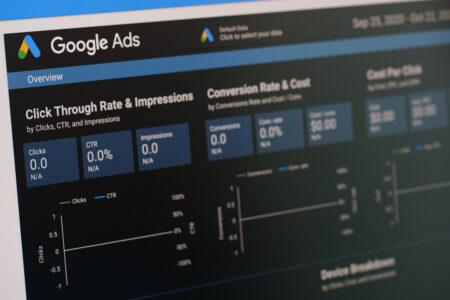If you’ve worked in digital marketing for any period of time, you’ll be familiar with the following scenario:
Someone needs to write a blog post for the website, and it’s your turn. You have no idea what to write about, or maybe no experience in writing, so you sit around trying to come up with a great blog post idea. Before you know it, you haven’t written anything and the deadline is looming.
It’s a situation that hundreds of people who work in marketing find themselves in, but it need not be a painful process…
Discovering your idea
Blog posts don’t have to be incredible works that alter how people understand their subject matter, but they do at least have to be interesting. Quite often, the issues marketers deal with on a day-to-day basis are a great foundation for a blog post. Remember: All conversions begin with someone trying to solve a problem.
If you find yourself having to explain the same things again and again, it’s very likely that writing a blog post about that issue will be of use to more people than you think. Before you sit down to write, go back through some of the issues you’ve faced recently and work out whether any of them would be useful to your clients/customers. In the case of B2B organisations, this type of content can be very well received!
B2C content can be a little more tricky, as you’re unlikely to have that much direct contact with your customers. However, the same principle still applies. Be aware of any problems that your customers might be facing, and aim to answer any questions they might have.
A little bit of research goes a long way
Once you’ve identified your topic, there are a few things you can do to make the entire process a little easier. Whenever keyword research is mentioned in relation to blog posts, it’s easy to think “my audience is on social media, so I can skip that”, but you might be missing an opportunity.
Regardless of the channel that your blog is intended for, keyword research can be a valuable way of discovering how people think. Even using the tried and tested Google autocomplete tactic can throw up interesting factors that you may not have considered on first consideration. Dive a little deeper, and you’ll start to find similar articles that have been published by competitors. This is where you can start to take note of factors like semantic terms (words and phrases that commonly appear in content about your topic), tone of voice, word count and even how the article is being summarised in meta descriptions.
Pull together a few bullet points of the key features your blog needs to include to bring it in line with your research, and you’re near enough ready to go!
Start writing
The key to an engaging blog post is to grab your readers attention as quickly and effectively as you can. Remember that they’re likely to be reading your post to solve a problem that they’re having, and try to introduce an understanding of the issue as quickly as you can.
At the beginning of this article, I outlined a scenario around writing blog content. The fact that you’ve made it this far into the article suggests that the scenario resonated with you and drew you in to read further. Being able to grab the attention of your target audience early on helps to encourage them to read the rest of your article, so summarise the issue your post is based on and suggest that you can help people to fix it. You can even start to lay the foundation of this in your post title.
After that, all you need to do is fall back on the knowledge you already have! Try to communicate clearly and effectively, and the rest of the blog post should flow out nicely.
The bells and whistles
When you’ve finished writing your content, make sure you get someone else to check through it for you to pick up any spelling or grammatical issues that might make the post harder to read than you would like. If you haven’t got anyone else to fall back on, pay attention to the conciseness tips offered by Word or use a third-party offering such as Grammarly to help improve your writing.
Written content in isolation often isn’t quite enough to encourage readers to engage with your blog post. A good blog post is usually visually appealing as well as well written. Consider how you could use header images (featured images in WordPress) to draw attention to your article, or how images could be used throughout the article to support or enhance the written content.
Finally, make sure you’ve included a call to action of some kind. Your article might solve an issue for someone, but it’s much more likely that you’re pointing them in the direction of where they need to go to solve their problem or offering an alternative if they weren’t able to solve their problem purely by reading your blog post.
If all of those things are in place, hit publish! You’ve written a great blog post. Remember that you can always circle back around and improve your article if you need to though!
Still need help with content marketing?
Here at Coast, our copywriting and content marketing experts are well-versed in crafting powerful copy that both ranks and converts. If you’d like help tailoring your content to your target audience, give us a call today on 0845 450 2086.
Let's collaborate
Partner with us
Let’s work together to create smarter, more effective solutions for your business.
Related blogs
Who we are
Explore how our culture and expertise fuel digital innovation
Join us








